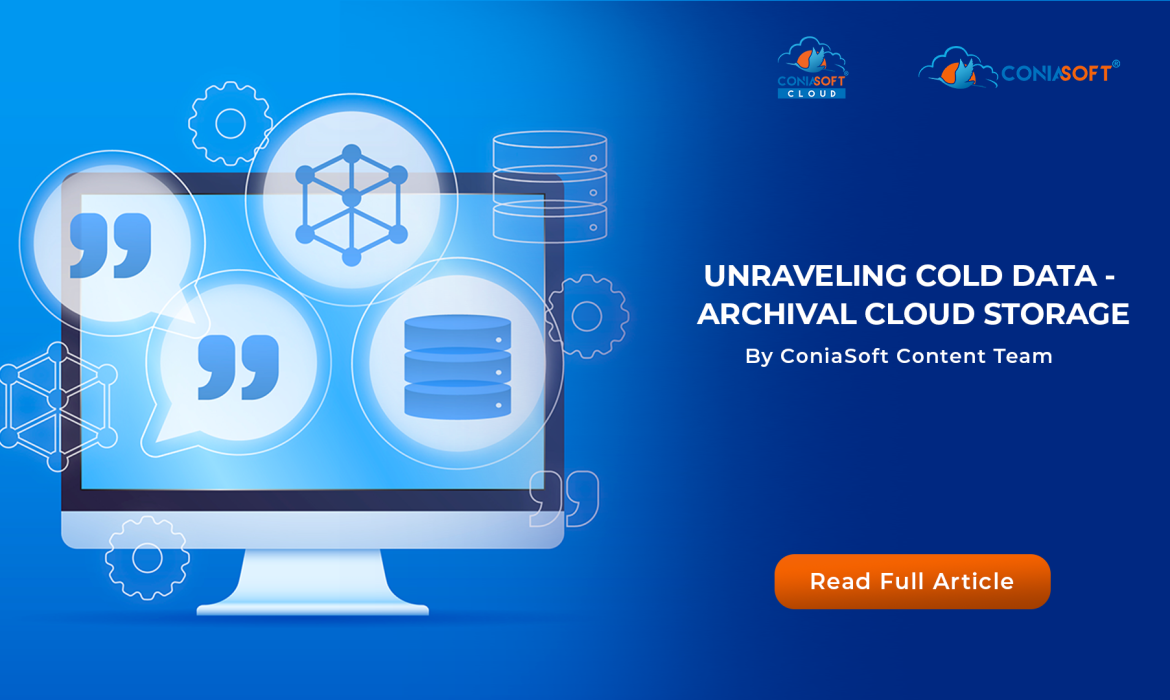In the bustling and ever-evolving landscape of cloud storage, we often find ourselves immersed in discussions about “hot” data – those files and databases that we access frequently and rely on for our day-to-day digital activities. However, lurking quietly in the shadows is a vast and largely unexplored territory filled with “cold” data, which accumulates with the passing of time, harboring immense potential and value. Today, let’s venture into the intriguing world of archival cloud storage and uncover the distinct challenges and remarkable opportunities that it presents.
What is Cold Data, Anyway?
Cold data, in its essence, refers to information that is rarely accessed. Imagine it as the digital equivalent of that neglected, dusty box of old family photos tucked away in your attic—a treasure trove waiting to be rediscovered. While this data might not see daily use, it remains invaluable for long-term preservation and potential future utilization. Categories of cold data encompass a variety of information types, each serving a vital role in organizational and historical contexts:
- Compliance Data: These are essential records mandated by regulatory frameworks and legal standards, often requiring prolonged retention periods. Organizations must maintain this data meticulously to ensure readiness for audits, inquiries, and compliance checks, which can include everything from financial transactions to employee records.
- Historical Archives: This category includes a rich tapestry of documents, images, and videos that capture and preserve significant past events. These archives not only serve as invaluable resources for researchers and historians but also offer a tangible connection to heritage and culture, allowing future generations to gain insights into the world as it once was.
- Log Files: These are systematic records generated by computer systems and applications, providing essential audit trails for tracking system activity. Log files are foundational for diagnosing issues, analyzing performance metrics, and ensuring the integrity and security of systems. They help IT professionals understand the behavior of software and systems over time.
- Media Archives: This category comprises extensive collections of audio, video, and photographic files, often gathered for artistic, educational, or cultural purposes. Media archives preserve creative works and cultural expressions, making them accessible for future productions, historical documentation, or simply for the enjoyment of audiences.
- Scientific Data: Encompassing vast datasets generated from experiments, simulations, and research endeavors, this type of data demands long-term storage due to its potential to drive future breakthroughs in science and technology. Scientific data is vital for ongoing studies, corroborating existing findings, and facilitating innovative research that could lead to significant advancements.
Each of these categories reflects the importance of preserving various types of data, ensuring compliance, fostering creativity, and supporting scientific advancement across different fields.
The Challenges of Cold Storage
Storing vast troves of cold data brings forth a range of unique challenges:
- Cost Optimization: Traditional storage solutions can be prohibitively expensive for long-term archival, leading organizations to explore cost-effective options. Thankfully, cloud providers now offer tiered storage solutions, where archival storage stands out as the most affordable choice for infrequently accessed data.
- Data Durability and Availability: Ensuring the longevity and integrity of data over prolonged periods is essential. Cloud providers implement sophisticated redundancy and data replication strategies to safeguard against risks such as hardware failure or data corruption.
- Retrieval Times: While archival storage is crafted for the long game, it isn’t designed for rapid access. Retrieving data can often take hours—or even days—depending on the service and retrieval option chosen, presenting a significant consideration for organizations.
- Data Governance and Compliance: Adhering to strict data retention policies and regulations is paramount, particularly for sensitive information that may be subject to scrutiny in legal or compliance contexts.
The Rise of Archival Storage Services
Noteworthy players in the cloud market, such as AWS, Google Cloud, and Azure, have recognized these challenges, bringing forth specialized archival storage services designed to address them effectively. These services provide:
- Ultra-Low-Cost Storage: Significantly alleviating the financial burden associated with long-term data retention, enabling organizations to breathe easier.
- High Durability: Utilizing robust data redundancy and advanced error correction mechanisms to ensure data integrity across vast storage landscapes.
- Flexible Retrieval Options: Offering a variety of retrieval speeds and pricing to cater to different needs, providing organizations the flexibility to choose their level of urgency.
- Integration with Data Lifecycle Management Tools: Simplifying the complex web of data governance and compliance management, making it easier to stay within regulatory guidelines.
Final Thoughts – The Future of Cold Storage
As the volumes of data continue to explode beyond imagination, archival storage will assume a progressively vital role. Innovations in storage technologies, including groundbreaking DNA storage and optical storage advancements, promise unprecedented density and durability. Furthermore, strides in AI and machine learning herald a new era where we can extract even greater value from our expansive repositories of cold data.
In conclusion, while cold data may lack the allure of its hotter counterpart, it is an indispensable element of our digital ecosystem. By gaining a deeper understanding of the challenges and opportunities associated with archival cloud storage, we can unveil the hidden potential of our data and pave the way for a more data-driven future.

























